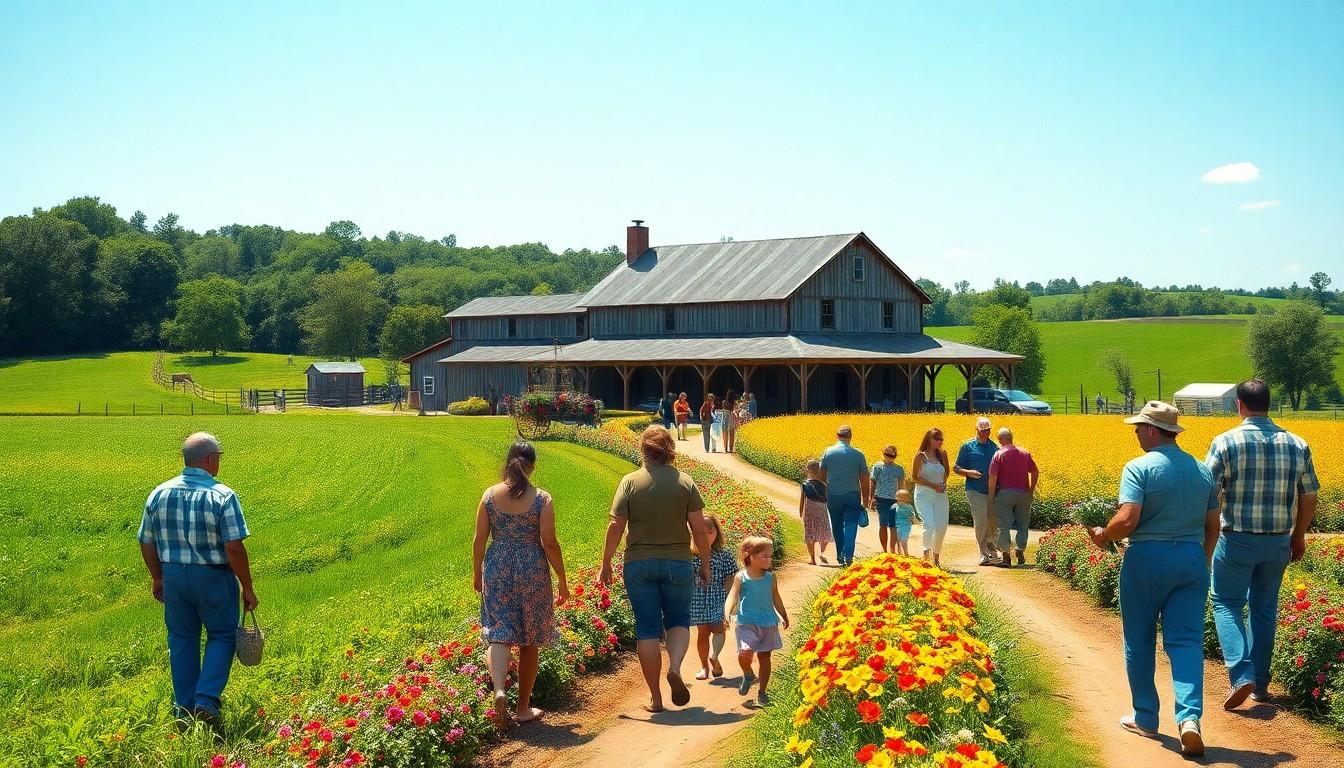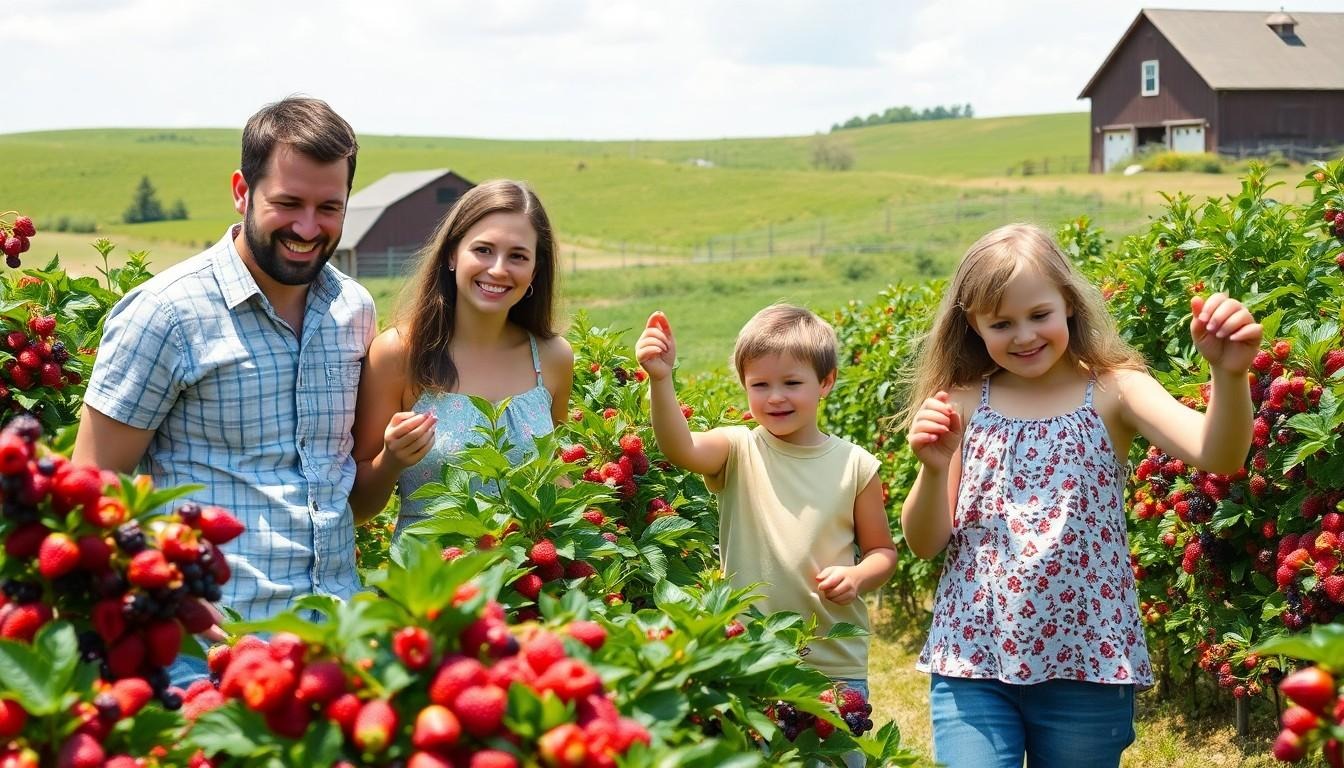Imagine trading the hustle and bustle of city life for a day on a charming farm, where the only traffic jam involves a few curious cows. Welcome to the world of agritourism, where fresh air and fresh produce come together to create unforgettable experiences. As travelers increasingly seek unique adventures, agritourism has blossomed into a thriving market, offering everything from berry-picking escapades to immersive farm-to-table dining.
Agritourism Market
Agritourism encompasses a variety of experiences that connect tourists with agriculture, offering unique and hands-on opportunities. This market has seen significant growth, driven by travelers seeking immersive ventures in rural settings. According to recent reports, the global agritourism industry is projected to reach $2.57 billion by 2026, reflecting an annual growth rate of 10.5%.
Farm stays, excursions, and workshops serve as key attractions within agritourism. Visitors engage in activities like fruit picking and livestock feeding, allowing for memorable interactions with the land. Moreover, farm-to-table dining experiences remain a popular aspect, where local produce enhances culinary enjoyment.
Regions across the globe are capitalizing on agritourism’s popularity. The United States, Europe, and Australia rank among the leading destinations, each offering diverse experiences tailored to local agricultural practices. Regions like California’s Napa Valley are renowned for wine tourism, while the Midwest promotes experiences around corn and soybean farming.
Consumers’ preferences are shifting toward sustainable travel options, driving demand for agritourism. Many travelers prioritize eco-friendly practices and seek to support local farming communities during their trips. This trend reinforces the need for operators to adopt sustainable methodologies and educational opportunities that enrich their offerings.
Partnerships among farmers, local organizations, and government entities bolster the agritourism sector. These collaborations enhance marketing efforts, promote local resources, and ensure the success of agritourism ventures. By expanding networks and sharing best practices, stakeholders effectively cater to the increasing interest in authentic rural experiences.
Key Trends in Agritourism

Agritourism is gaining momentum, driven by various trends that reflect consumer preferences and technological innovations.
Growing Consumer Interest
Increased demand for authentic rural experiences attracts travelers to agritourism. Many consumers seek connections with local farms, resulting in a broader variety of activities. Farm stays, workshops, and interactive excursions appeal to families and individuals alike. Approximately 66% of travelers now prefer experiences over material possessions, indicating a shift toward more memorable adventures. A focus on health-conscious lifestyles further drives interest, as farm-to-table dining options gain popularity. The surge in eco-tourism also plays a role, with travelers prioritizing sustainable practices and supporting local agriculture.
Technological Advancements
Emerging technologies enhance the agritourism experience, making it more accessible. Online booking systems streamline reservations for farm stays and activities. Virtual tours allow potential visitors to explore farming experiences remotely before committing. Social media influences consumer choices, with farmers showcasing their operations and engaging with audiences. Data analytics helps agritourism businesses tailor offerings to visitor preferences, resulting in enhanced customer satisfaction. Moreover, advancements in mobile applications provide users with real-time information on local attractions and activities, further enriching their agritourism experience.
Benefits of Agritourism for Farmers
Agritourism offers various advantages for farmers, enhancing their operations and community impact.
Diversification of Income
Farmers benefit from agritourism by diversifying their income streams. Instead of relying solely on traditional crop sales, they tap into tourism revenue through activities and experiences. For instance, by hosting events like strawberry picking or farm tours, farmers complement their agricultural income. Agritourism generates an estimated additional 10% to 30% of annual income for many farm operations. By attracting tourists, they reduce economic vulnerability linked to market fluctuations. Visitors engaging in farm activities often stimulate further income through purchases of farm products and souvenirs.
Enhancing Local Economies
Agritourism significantly enhances local economies. Farmers serve as key players in promoting economic growth by attracting tourists to rural areas. Each visitor contributes to surrounding businesses such as restaurants, hotels, and transportation services. Increased foot traffic creates job opportunities, benefitting the entire community. Studies indicate that every dollar spent in agritourism generates about $1.86 in economic impact. Local economies flourish as a result of increased spending, making agritourism a valuable catalyst for sustainable growth. Collaborating with local producers further strengthens community ties and encourages regional cooperation.
Challenges Facing the Agritourism Market
Agritourism faces several obstacles that could impede its growth and sustainability. Regulatory issues and environmental concerns play significant roles in shaping the landscape of this market.
Regulatory Issues
Regulations often create hurdles for agritourism ventures. Local zoning laws may restrict operations, limiting what activities can occur on agricultural land. Compliance with health and safety regulations can also prove challenging. Farmers must navigate a complicated landscape that often varies by region, leading to confusion and frustration. Licensing requirements might impose additional financial burdens. Many small operators lack resources to manage these complexities, discouraging potential agritourism entrepreneurs.
Environmental Concerns
Environmental impacts also pose significant challenges for agritourism. Increased visitor traffic can lead to soil degradation, water contamination, and wildlife disruption. It’s crucial for farmers to balance business opportunities with ecological stewardship. Sustainable practices are essential to mitigate these issues. Additionally, visitors may contribute to pollution through waste and carbon emissions. As agritourism thrives, maintaining an eco-friendly approach becomes increasingly important for long-term success.
Future Outlook of Agritourism Market
Projections indicate the global agritourism market will expand to $2.57 billion by 2026, experiencing an annual growth rate of 10.5%. Increased interest in authentic experiences drives this upward trend, as travelers seek unique interactions with agriculture. Sustainable travel options further fuel demand, with eco-conscious tourists favoring agritourism due to its connection with local farming communities.
Major regions, including the United States, Europe, and Australia, leverage their agricultural strengths to attract visitors. Farm stays, workshops, and excursions provide engaging experiences that resonate with tourists looking for hands-on activities. Technology plays a crucial role in this evolution, with innovations such as online booking systems and mobile applications enhancing accessibility.
Individual farmers benefit significantly from agritourism. By diversifying income streams with activities like berry picking or farm tours, they can boost their revenue by an estimated 10% to 30%. Each agritourism visitor contributes to local economies, supporting businesses like restaurants and accommodations. Every dollar spent in this sector generates about $1.86 in economic impact, reinforcing rural growth.
Regulatory obstacles present challenges that agritourism operators must navigate. Local zoning laws and health regulations impact business operations, especially for smaller farms. Environmental concerns, including soil degradation and increased visitor traffic, also need attention. Emphasizing ecological stewardship is essential for balancing profitability with sustainability in this expanding market.

